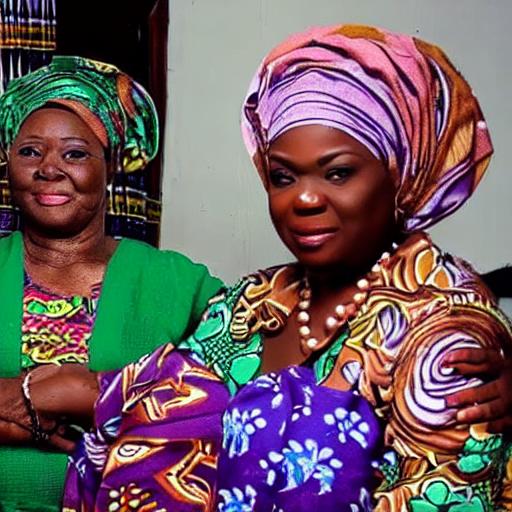Taboos and folktales are elements in Nigerian culture. Read this to the end and you will see how relevant both of them have been before the advent of social media. As a matter of fact, taboos were first prevalent until the young ones started kicking against it due to the lies found in them. Even then, folktales are now being rejected as fantasy due to the advent of science. That is the reason that vices are celebrated as values.
The Native Doctor handed over the fertility portion to Tortoise. It was a mouth-watering herbal soup with a lot of meat. He could not resist the aroma. He started salivating, like a local dog sighting a brisket bone. He asked himself how he could resist the temptation of eating from the fertility portion that was meant for his wife, the Turtle. The native Doctor had given the assurance that as soon as Turtle took it as prescribed, an end would come to their years of infertility. Tortoise’s confidence stepped up. He soon crashed their hope of having offsprings. Tortoise found himself licking the pot of native soup. Instantly, his stomach started getting bigger. He had become pregnant! Tortoise started singing out his woes on his way back to the native Doctor’s house, asking for restoration from the self-imposed horror. What a taboo. With this, listeners are admonished to have self-control and discipline.
Learning from the weird experience of Tortoise, Folktales were used by the old folks to teach social ethics. They are lessons about family dynamics and are against antisocial behaviours. For instance, the dangers of leaving children unguarded are revealed through folktales. Moreover, the troubles of polygamy and siblings rivalry are revealed. These stories are imaginative, illustrative and reflect African judicial system. ‘Cases’ are brought to the audience and judged on the spot. Folktales are situational, simple, straightforward and cut across all ages. Judgements, either divine or human are given objectively, in clear terms and at no monetary cost. Both the tellers and the listeners sit together, free to render comments and let out emotions as the folktales are being told. That makes them interactive. The major time of rendition is evening, to discourage laziness. Telling folktales in the morning was virtually like taboos before it found its way into the classroom setting.
Explaining life’s phenomena and promoting play-and-learn method, folktales encourage eye contact, swaying of hips and smacking of lips. Therefore, they are forms of entertainment and exercise. There are rooms for questions, answers and self-examinations. Connecting people to their origins, folk stories promote distinction, stability, diligence, equity and integrity. Folktales help the use of native language, fluency and custom. Joining forces with pre-narration brain-teasers, they promote verbal and vocational aptitudes.
Respecting hierarchy, young ones look up to adults, respect them as custodians of wisdom, listen and draw from their wealth of knowledge about the environment.

Teaching of both the young and old in this way is an old form of interactive and more effective mentorship. Patience, humility, team spirit and adventures of life are prescribed in folktales. The repercussions of antisocial behaviours and Law of Karma are made known. Heroism through getting over challenges to attain promotion is taught in folktales. Endurance is the watchword.
Young ones, as little as eight years old, (as in the case of Oluremi Onosanya,’ Omo Obokun’, recorded by Adeboye Babalola), are given leadership roles, as they render folk stories. Generally, there are allowances for modifications, which account for changes in the different collections. Therefore, everyone is a co-author.
During an interview, Eye Egbe Omosofe, a nonegenarian, claims that folktales are fast phasing out in her village and she hardly uses them again. She agrees that television and other gadgets are now substitutes. As a way of modernisation, there are online, books and newspaper publication and documentations of folktales for continuity. Yet, eurocentric attitude of most of the users are drawing them away from the folk stories while instructions are drawn from other sources, including the social media. In fact, the use of folktales is almost treated as taboos.
Incidentally, younger children do not have access to them while youths and adults who have phones go for ‘more serious matters,’ on their mobile applications. Invariably, the structure has been altered, most values have been removed and the society is ailing. The next step is to redeem these stories from total extinction.
There are no sufficient educational modes to help the inadequacies of instructional taboos. More children are shifting to animation and cartoons. Youths merely pick ‘virtues’ from ‘friends’, who are, in the real sense, enemies. Culture diffusion is not helping matters. More people are shifting to the entertainment arena, giving it more focus than the troubles that are overshadowing their environment. Entertainment is ‘preferred’ to solutions and developmental strategies. Could it be just a way of escape? Why should people be at leisure when rates of crimes are getting higher? Many people are either indifferent or joining in the acts of indiscipline.
Stealing has virtually become a hobby. There is lesser regard for parents. There is lesser respect for traditional institutions. (Traditional heads have authority and power that tends towards religion, by virtue of their offices. It is unacceptable to disregard them). Socio-economic values are depreciating. Young ones are no longer enduring hardship and there are not many true heroes and heroines any more. Not many young ones are discovering themselves any longer. Excesses are celebrated and have become measurements for contentment.
As a proactive and reformative mode of instruction, folktales are a treasure that should be preserved for effective use. Doing away with them is like disposing of an important unit of the custom of a people. Of course, more people should join the efforts of Jimmy Sholanke of (Story Land) fame and Aunty Nnoma of (Story Time with Aunty Nnoma), to propagate more of folktales. Standard folktales should be embedded in the school curriculum and taught to the students. The best is to catch these children young. In the whole of this, the quest of people for realism cannot be doubted. However, there is no harm in making trials.




